All photo credit: Lily Lin
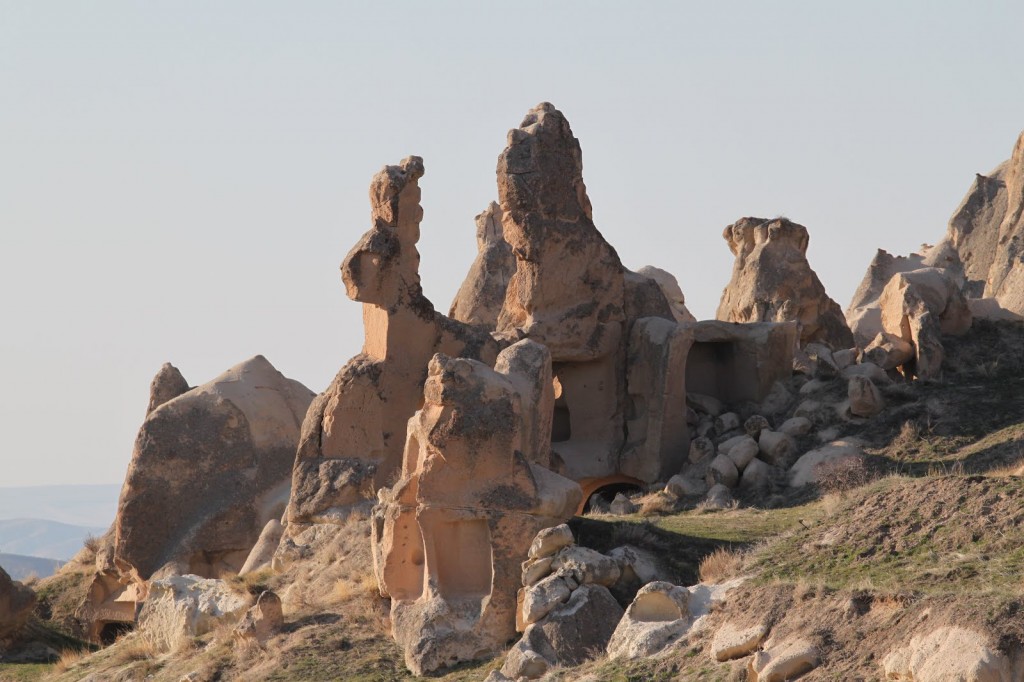
Moonstruck in Cappadocia
I guzzled down the remainder of my water bottle, exhaling deeply as I surveyed the barren, arid landscape from the window of my airport shuttle. Aside from the highway of asphalt that seemed to stretch for miles on end, I saw nothing but dirt and the occasional shrub on the side of the road. Where was the otherworldly moonscape sculpted by geological deposits of ash, lava, and basalt? Where were the conical formations that burst into vibrant hues of orange and red during sunset?
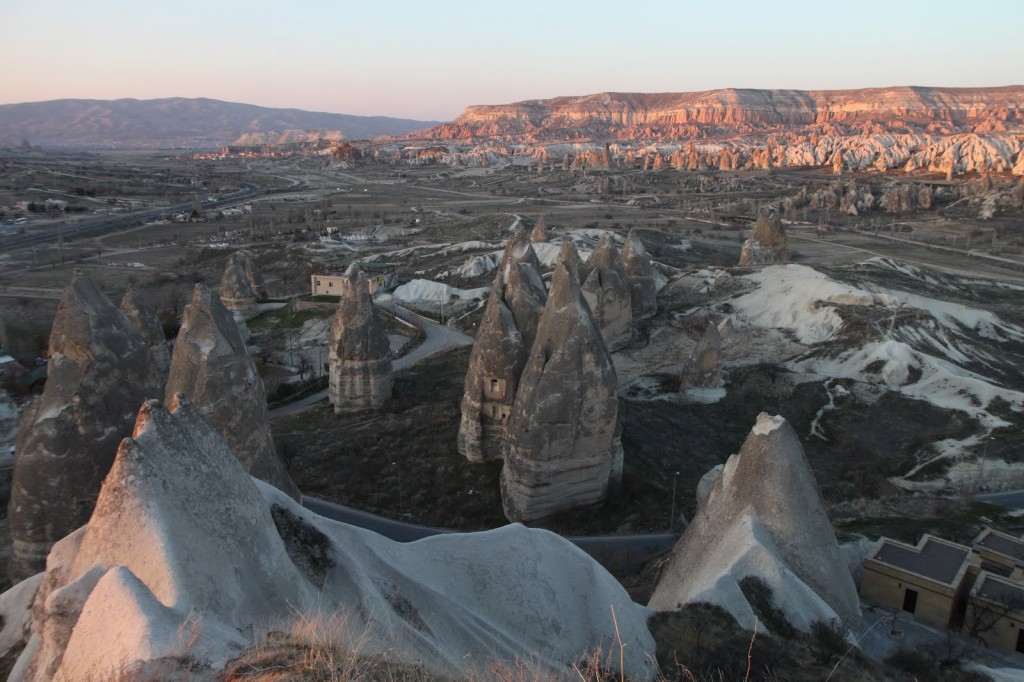
After thirty minutes of squirming in my seat, I spotted the first jagged rock formation in the distance. I could make out carvings in the pale yellow rock face that were used as windows and doorways in ancient times. As we pulled closer toward the small town of Goreme, I began to see the famed fairy chimneys typical of Cappadocia—sandstone pillars, obelisks, and pyramids formed by volcanic eruptions, each uniquely shaped by the wind and water of countless millennia.
Lying in the heart of south central Turkey, the Cappadocia region is comprised of several towns with Goreme, Urgup, and Uchisar as the primary attractions with the best historic cave homes for tourists. This area caught my imagination for its bizarre alien landscape, and the novel opportunity to sleep in a cave. Only in the last couple decades have these abandoned cave houses been revitalized and renovated to become near-luxury vacation destinations.
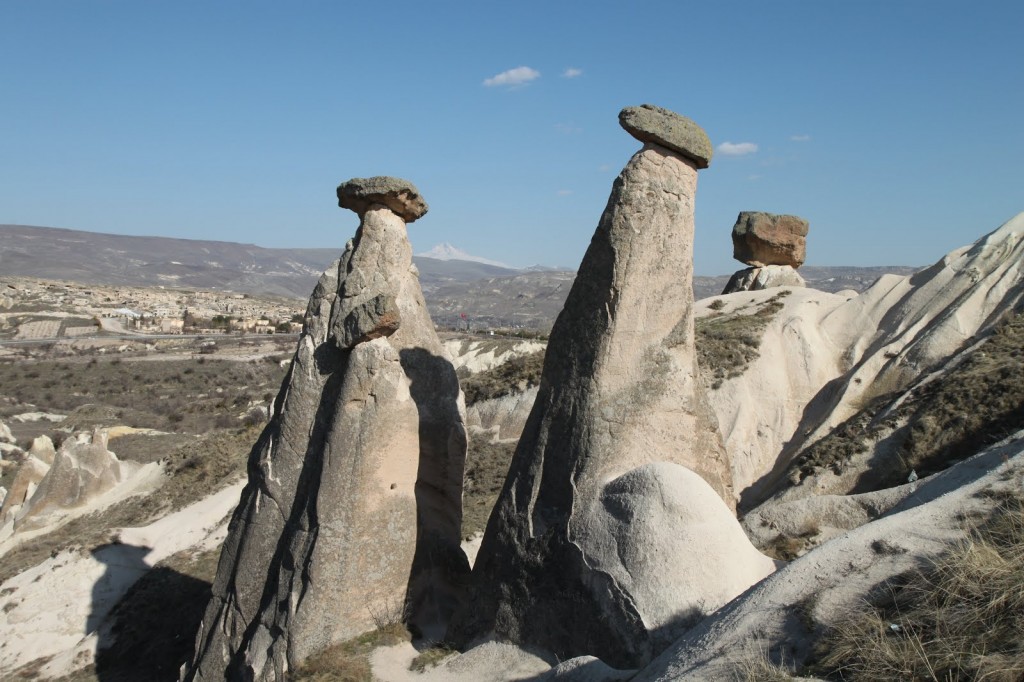
Historic Caves
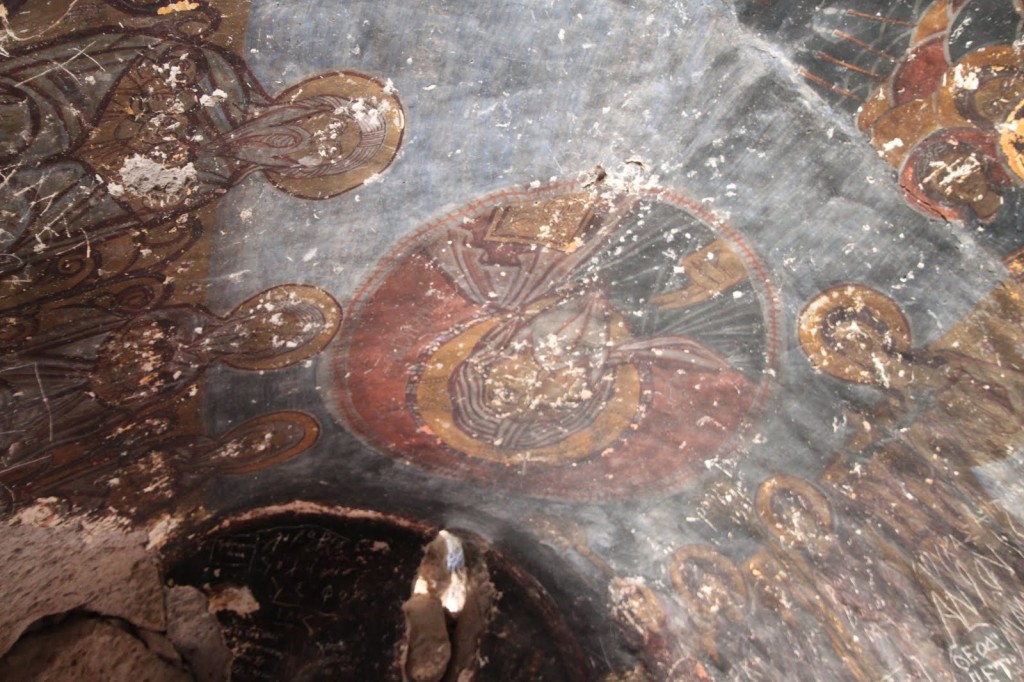
Long before the recent tourism boom in Cappadocia, the caves served an entirely different purpose. As early as the third century, Christians fled to these caves and even built rock-cut churches and underground cities to avoid Roman persecution. The religious paintings still visible on the ceilings and walls of these cave churches are a testament to the beauty and resiliency of their faith.
Some of the most impressive examples of Byzantine art reside at the Goreme Open Air Museum. Consisting of a vast complex of cave monasteries, this UNESCO (United Nations Educational, Scientific and Cultural Organization) World Heritage site contains a collection of eleven churches with names such as “Snake Church” and “Apple Church.” Each rock-hewn sanctuary reveals vibrant frescoes with images of Christ and depictions from the New Testament.
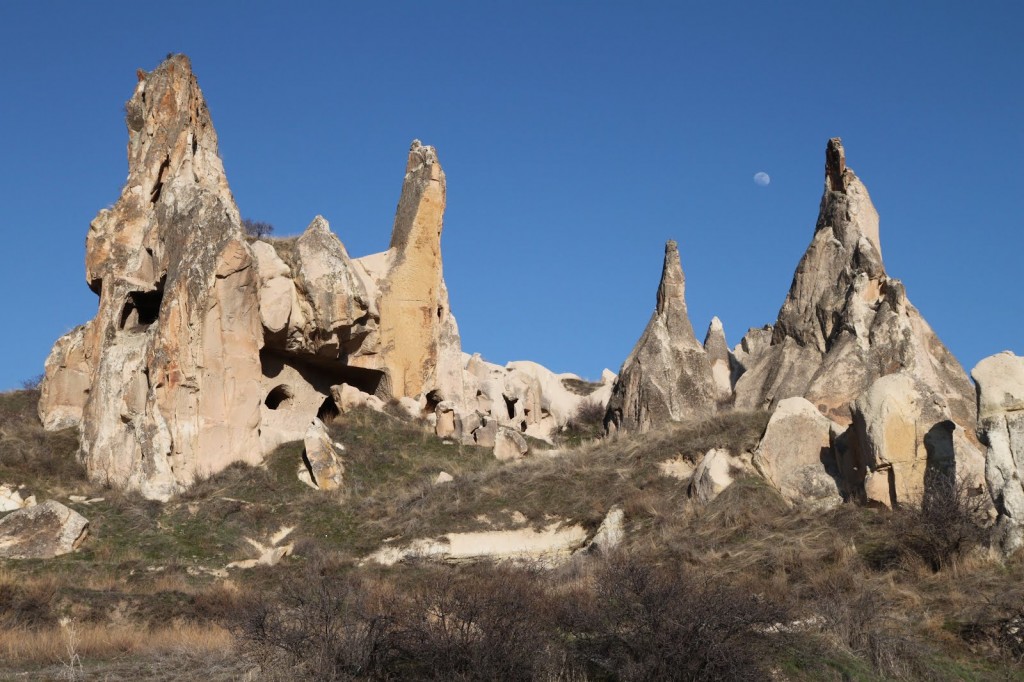
The proximity to this attraction led me to base myself in Goreme. Since this small town is literally carved from volcanic rock, there was no shortage of options for the experience of sleeping in a cave room. I opted for the Kelebek Hotel, as it was the first boutique hotel in the area and conveniently located within a five-minute walk to the town center, and a mile from the Open Air Museum. Similar to other cave hotels in the region, the Kelebek was converted from the owner’s family home into a retreat offering five-star hospitality with all the comforts of the modern world, including an overwhelming spread of Turkish specialty foods for breakfast and an in-house hamam bath.
The Kelebek has 36 rooms to choose from, ranging from fairy chimneys to luxuriously decorated Ottoman-style cave rooms graced by marble bathrooms and hamam basins. My room was formerly used as a stable, and consisted of a barrel-vaulted and arched living room made of stone connected to a cave bedroom formed by the porous remains of volcanic rock. The front door opened to a small rose garden, and offered spectacular views of the town and natural cliffs that dot the Pigeon Valley landscape.
Authentic Cuisine
Shortly after arrival, I ambled through the curvy narrow backstreets of the Kelebek property in search of dinner. All paths leading out of the hotel were at a steep decline, and I felt my legs bracing against the road to fight off gravity. Tucked into a row of cave homes was a sign for the Topdeck Cave Restaurant. Inside, I could see a few tables arranged neatly and an array of pillows spread around ottomans serving as tables.
The owner and chef, Mustafa, had converted his family’s stable into a restaurant that serves traditional Turkish food with fresh, organic local ingredients. The restaurant provides a written menu. However, after two separate visits, it was apparent that the best orders are placed by consulting with Mustafa. The menu changes every day and offers a wide variety of meze (appetizers), soups, and main courses (usually lamb and chicken). A visit to Topdeck requires a big appetite, as meals are made with the same flavors and flourish that is enjoyed by Turkish families in the privacy of their homes.
As I feasted on the meze spread of dips, fried cheese, and exotic salads, I tried to savor the moment and imagine what life must have been like for the early Christians who were forced to eke out an existence while hiding among the confines of such darkened and rough-hewn quarters.
Occasionally, I would see flickers of patrons’ shadowy forms playing against the hardened lava, illuminated by candles strategically placed into naturally-formed crooks of the rock walls.
During the course of my stay in Cappadocia, it was not the cave living experience that left a lasting imprint—it was an appreciation for mankind’s resilience, ability to adapt to nature’s landforms, and legacy of discovery, religion, and culture through the centuries that would form an everlasting impression.
Getting There
Turkish Airlines offers daily non-stop flights from Washington Dulles Airport (IAD) to Istanbul Ataturk Airport (IST). There are two airports serving Cappadocia: Kayseri Airport (ASR) and Nevsehir Airport (NAV). Nevsehir Airport is the newer and better organized airport of the two. Flights from Istanbul to Kayseri run more frequently during the day.
The following airlines offer direct flights to Kayseri and/or Neveshir: Atlas Jet (www.atlasjet.com); Pegasus Air (www.flypgs.com); Turkish Airlines (www.turkishairlines.com).
Many Cappadocia hotels offer private transport service from Kayseri and Neveshir to Goreme for 10 to 15 Euros per person. Alternatively, local travel agencies such as Argeus Tourism & Travel, Euphrates Tours, and Turkish Heritage Tours can also arrange a shuttle to your hotel for a similar cost.
Staying There
Kelebek Hotel
Aydinli Mahallesi Yavuz Sokak No 1
Goreme 50180, Turkey
www.kelebekhotel.com
Priced from $70 to $230, the room rates include a buffet breakfast and complimentary tea and coffee served all day. A hamam spa offers Turkish bath and massage services starting at $40.
Eating There
Topdeck Cave Restaurant
Hafiz Abdullah Efendi Sokak 15
Goreme 50180, Turkey
Food is reasonably priced; Expect to spend $10 to $15 for heaping plates of authentic Turkish cuisine.
Other Things to Do Near Goreme
Baglidere Valley
Best known as Love Valley, this valley of phallic rock formations is a prime example of the funny shapes created by an eroded landscape of volcanic tuff stone, wind, and weather.
Derinkuyu Underground City
Derinkuyu is the deepest underground city in Cappadocia, spanning eight stories and 60 meters deep. At one time, this city sheltered approximately 20,000 people with their livestock and food stores.
Hot Air Balloon Rides
A trip to the Cappadocia region would not be complete without a sunrise trip with Butterfly Balloons (www.butterflyballoons.com) to view the tops of fairy chimneys while floating effortlessly above the moon-like landscape.
 Asian Fortune Your source for all things Asian American
Asian Fortune Your source for all things Asian American


